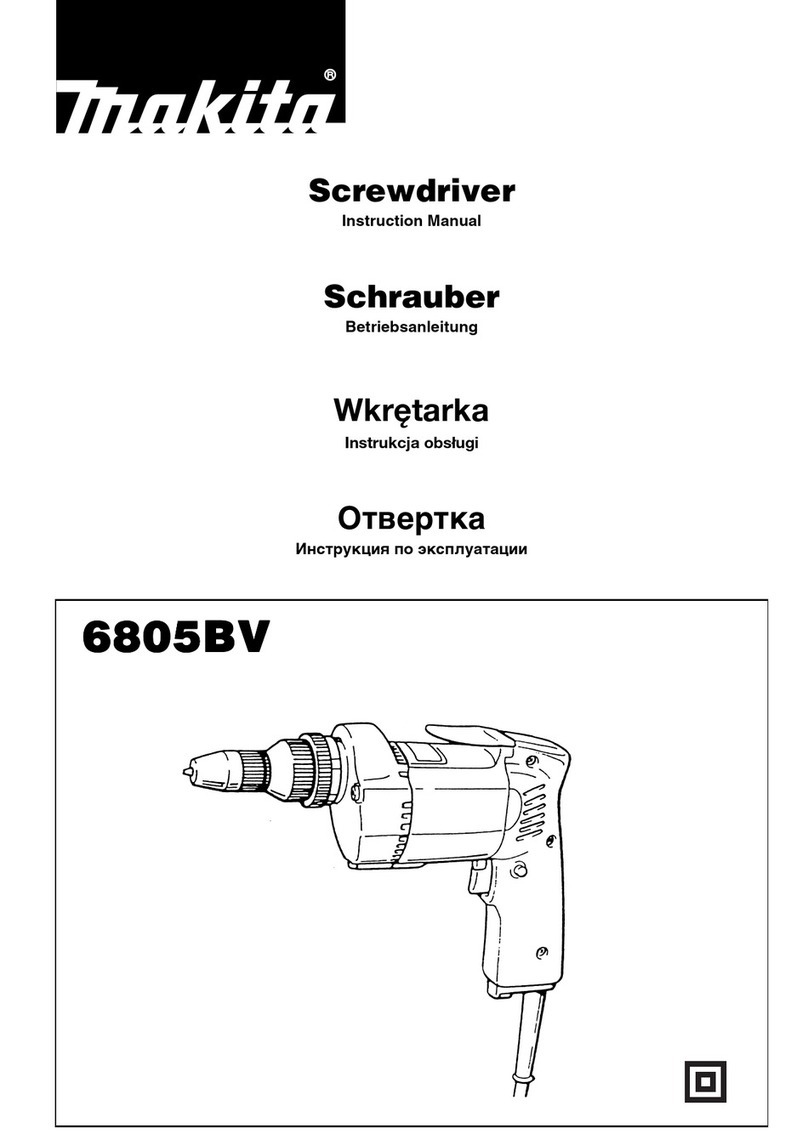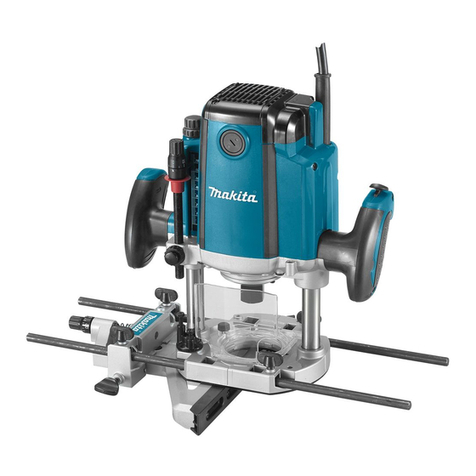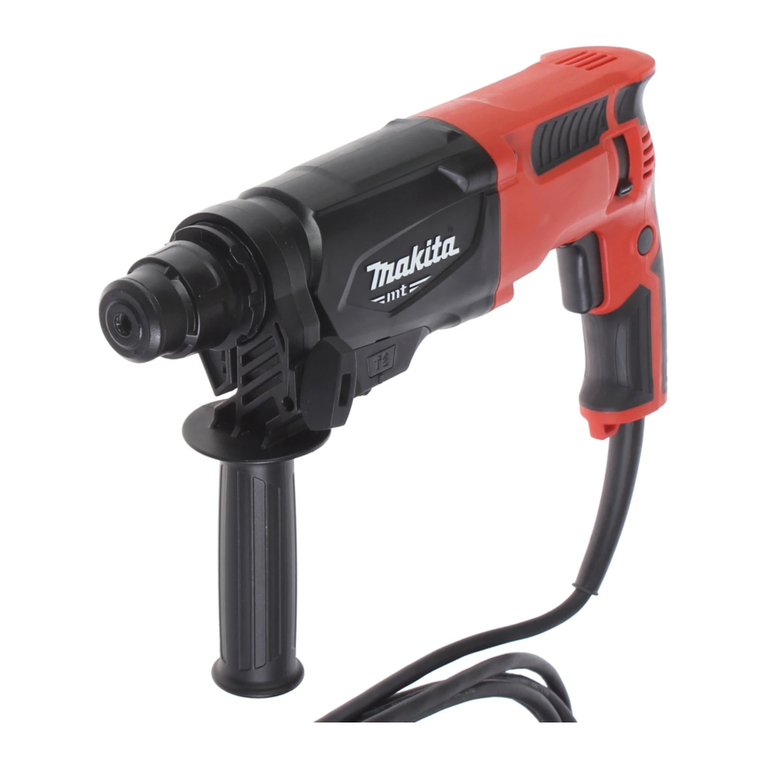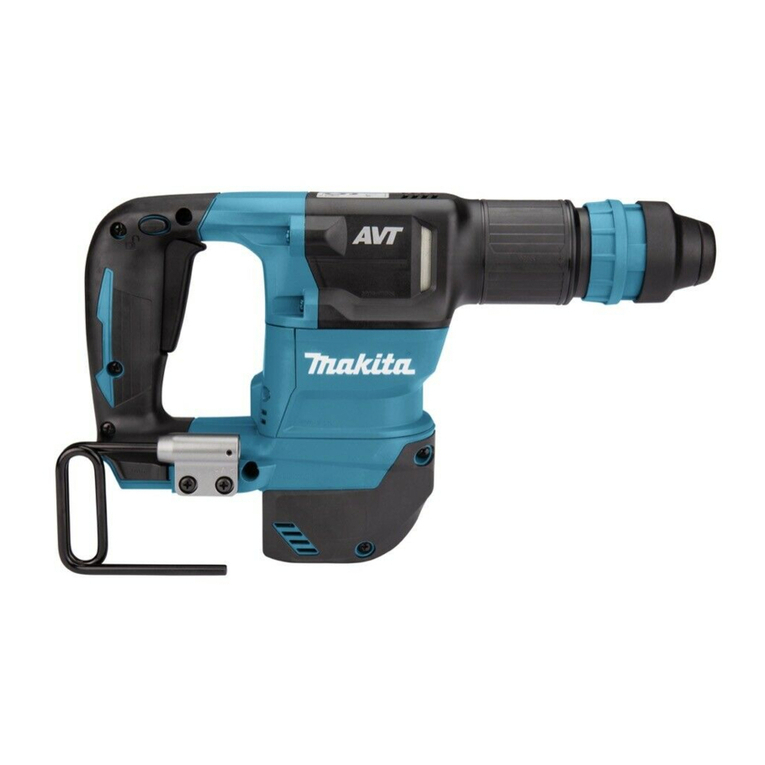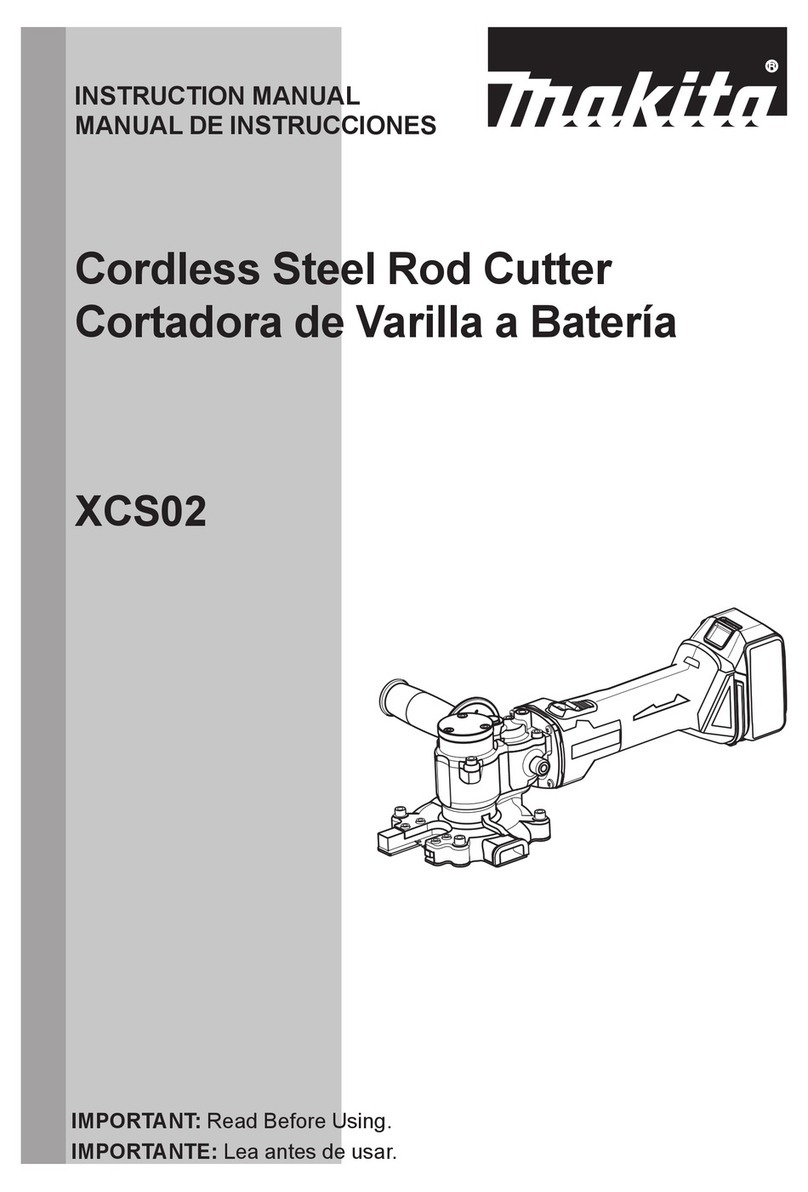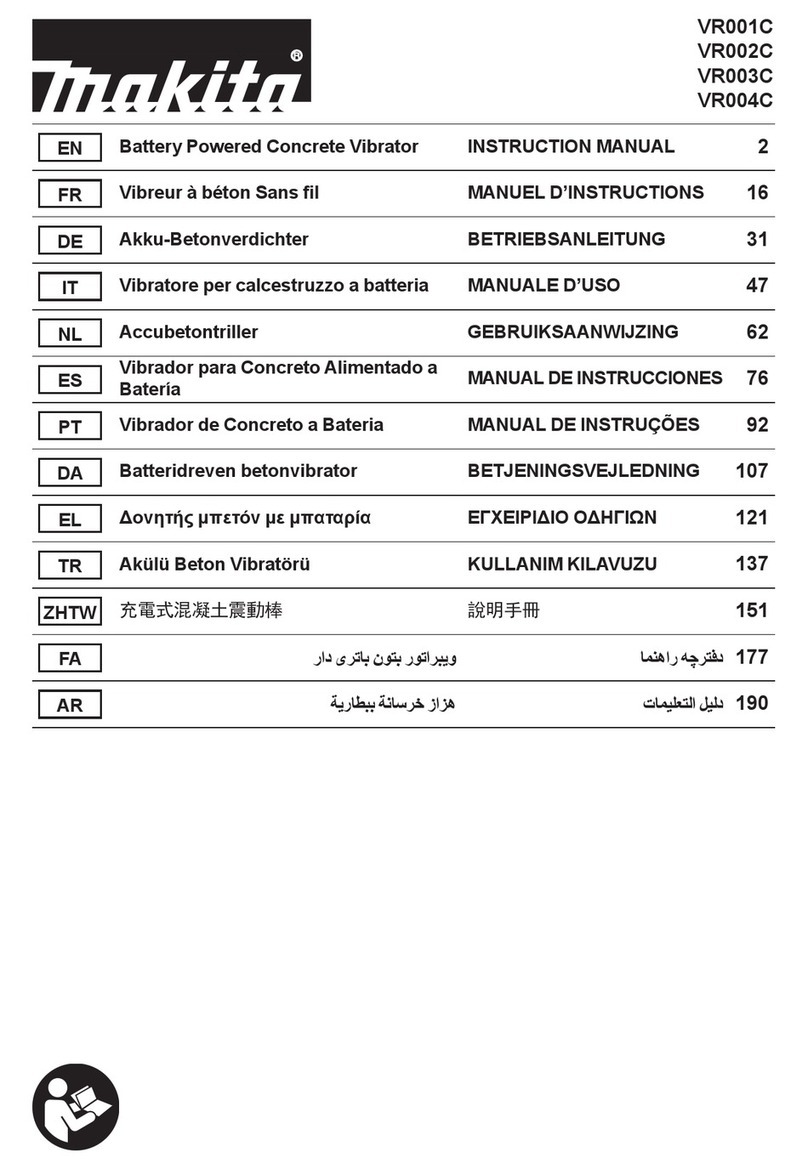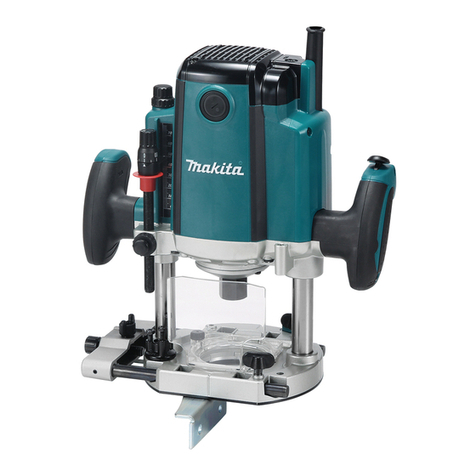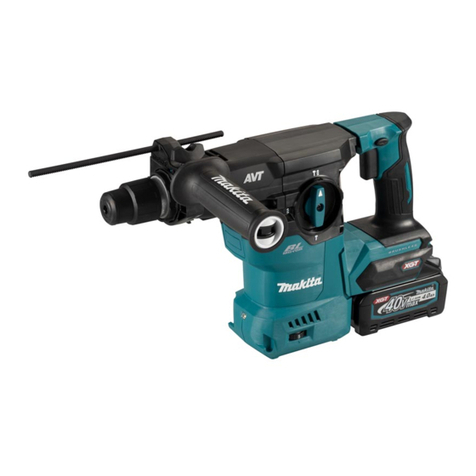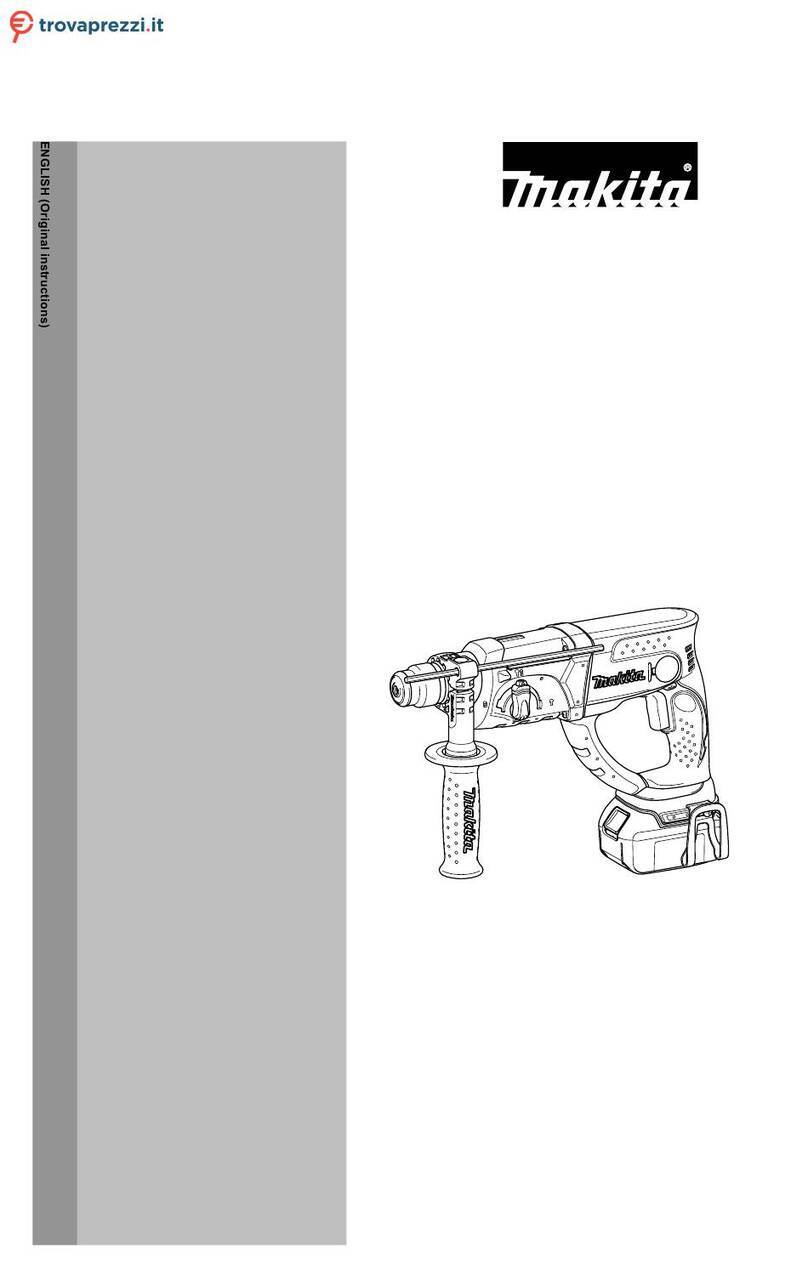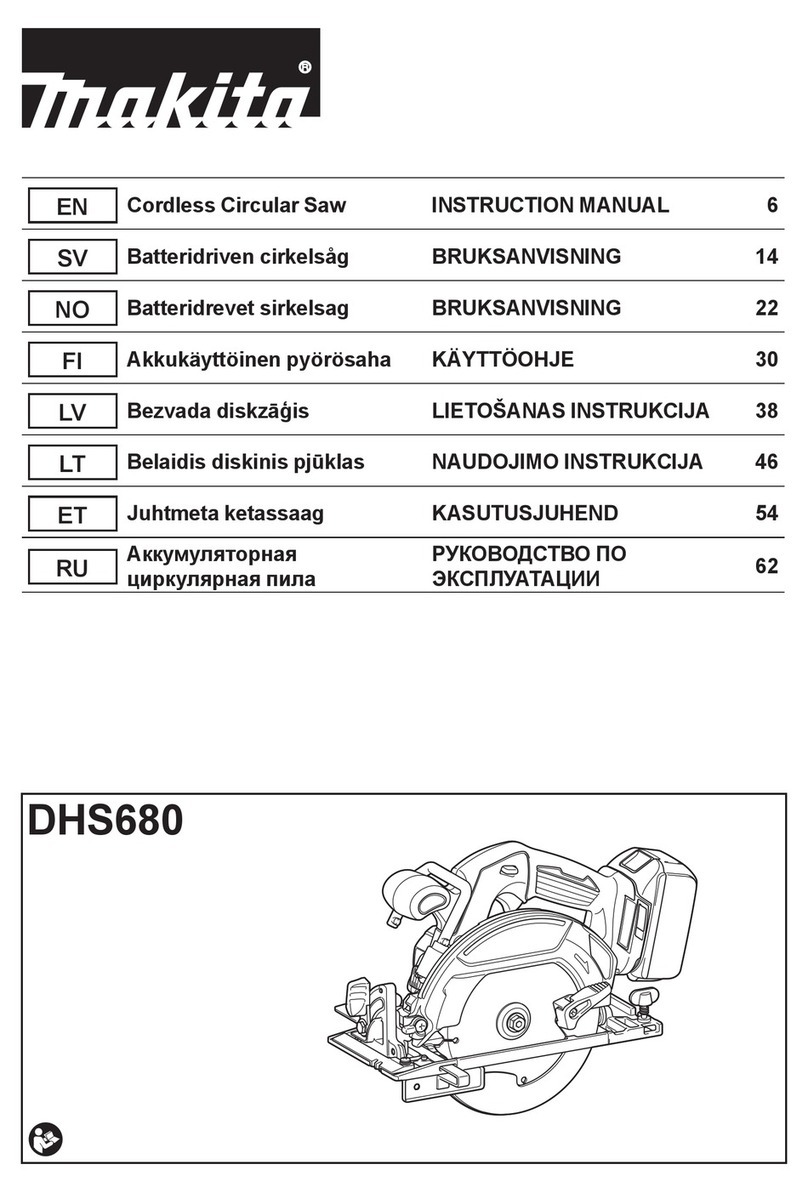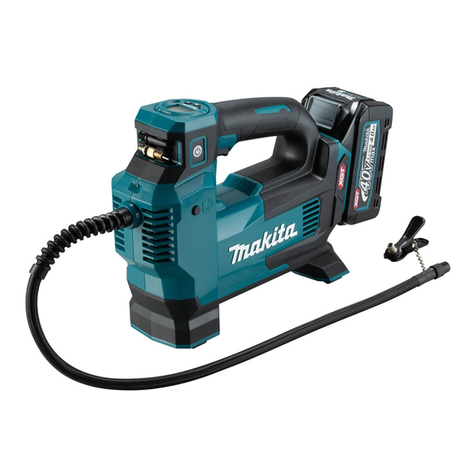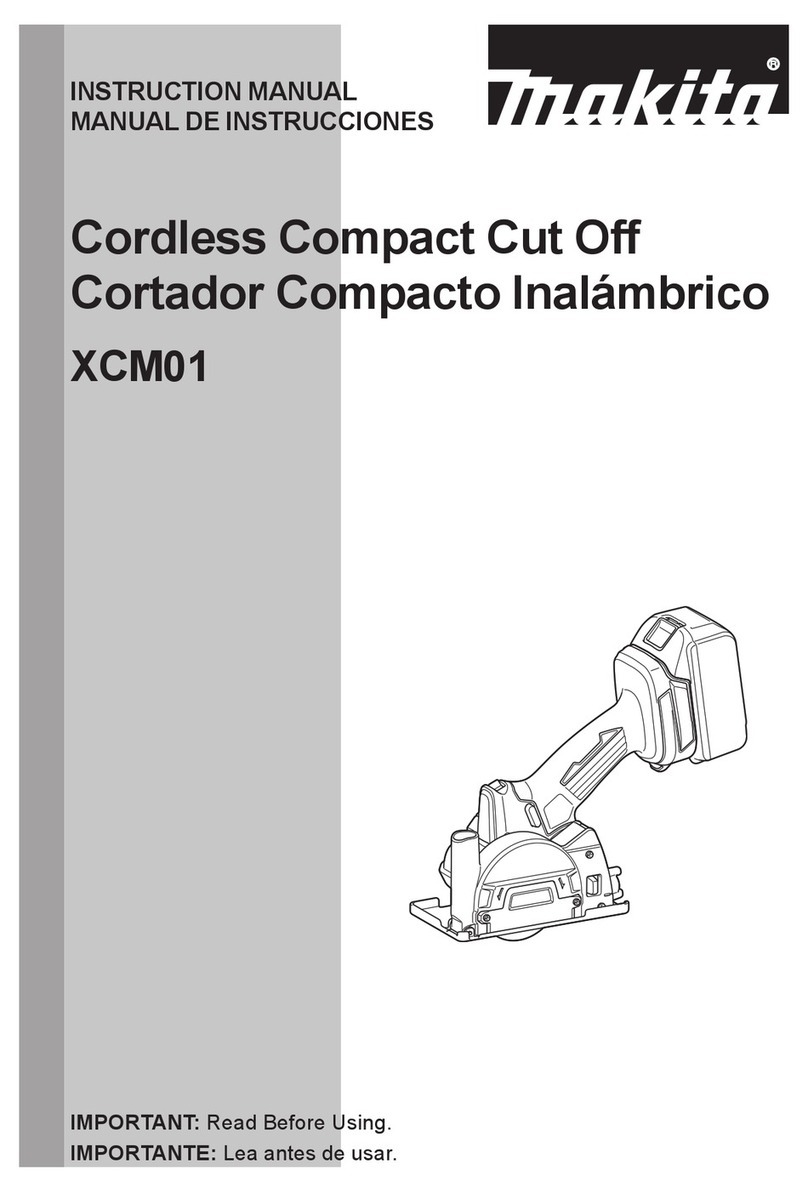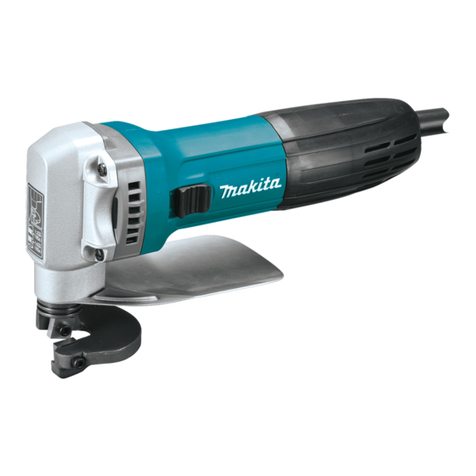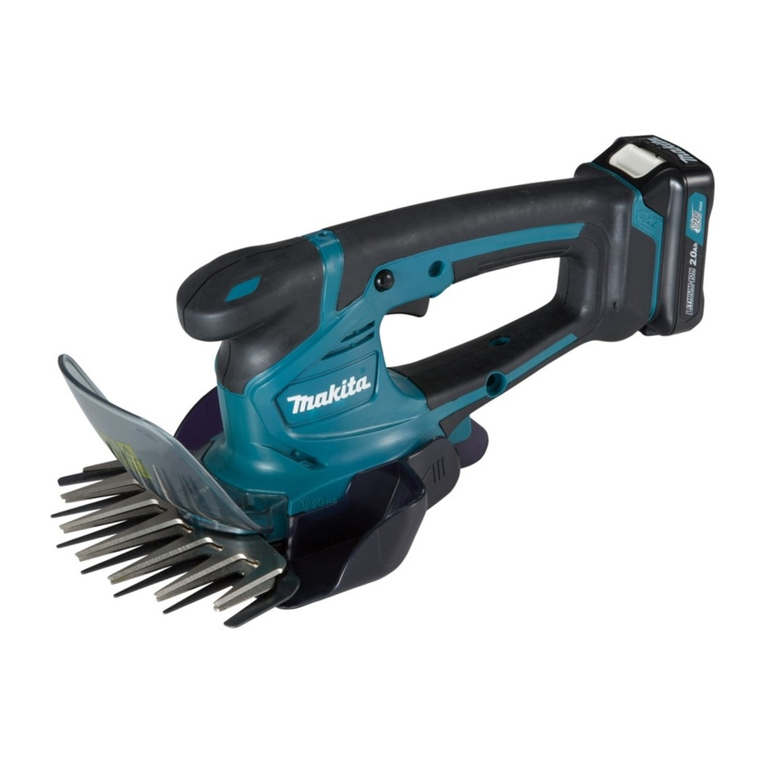
7ENGLISH
· Do not use the charger if the power cord or power
plug is damaged or if it is dropped or it is damaged
in any way. A damaged charger will increase risk
of electric shock or short circuit resulting in re.
· Do not use a power tool if the switch doesn’t turn
it on and off. Any power tool that cannot be con-
trolled with the switch is dangerous and must be
repaired.
· Follow instructions for lubricating and changing
accessories.
· Disconnect the battery from the power tool before
making any adjustment or changing accessories.
Such preventive safety measures reduce the risk
of starting the power tool accidentally.
14. Have your power tool serviced by a qualied
repair person using only identical replacement
parts. This will ensure that the safety of the
power tool is maintained.
· Do not disassemble or modify the battery and
charger.
· This power tool is designed in conformity with
safety regulations. Do not modify a power tool.
· Have your power tool serviced if it overheats or if
any other unusual symptoms are observed.
· Do not permit an unqualied person to repair the
tool as this may compromise the tool safety and
result in accident and personal injury.
15. Do not operate power tools in explosive atmo-
spheres, such as in the presence of ammable
liquids, gases or dust. Power tools create sparks
which may ignite the dust or fumes.
Electrical Safety
1. Power tool plugs must match the outlet. Never
modify the plug in any way. Do not use any
adapter plugs with earthed (grounded) power
tools. Unmodied plugs and matching outlets will
reduce risk of electric shock.
2. Avoid body contact with earthed or grounded
surfaces such as pipes, radiators, ranges and
refrigerators. There is an increased risk of elec-
tric shock if your body is earthed or grounded.
3. Do not expose power tools to rain or wet con-
ditions. Water entering a power tool will increase
the risk of electric shock.
4. Do not abuse the cord. Never use the cord for
carrying, pulling or unplugging the power tool.
Keep cord away from heat, oil, sharp edges
or moving parts. Damaged or entangled cords
increase the risk of electric shock.
5. When operating a power tool outdoors, use an
extension cord suitable for outdoor use. Use of
a cord suitable for outdoor use reduces the risk of
electric shock.
6. If operating a power tool in a damp location
is unavoidable, use a residual current device
(RCD) protected supply. Use of an RCD reduces
the risk of electric shock.
Personal Safety
1. Use personal protective equipment. Always
wear eye protection. Protective equipment such
as dust mask, non-skid safety shoes, hard hat, or
hearing protection used for appropriate conditions
will reduce personal injuries.
2. If devices are provided for the connection of
dust extraction and collection facilities, ensure
these are connected and properly used. Use of
dust collection can reduce dust-related hazards.
Power tool use and care
1. Do not force the power tool. Use the correct
power tool for your application. The correct
power tool will do the job better and safer at the
rate for which it was designed.
2. Do not use the power tool if the switch does
not turn it on and off. Any power tool that cannot
be controlled with the switch is dangerous and
must be repaired.
3. Disconnect the plug from the power source
and/or the battery pack from the power tool
before making any adjustments, changing
accessories, or storing power tools. Such pre-
ventive safety measures reduce the risk of starting
the power tool accidentally.
4. Use the power tool, accessories and tool bits
etc. in accordance with these instructions, tak-
ing into account the working conditions and
the work to be performed. Use of the power tool
for operations different from those intended could
result in a hazardous situation.
Battery tool use and care
1. Recharge only with the charger specied by
the manufacturer. A charger that is suitable for
one type of battery pack may create a risk of re
when used with another battery pack.
2. Use power tools only with specically desig-
nated battery packs. Use of any other battery
packs may create a risk of injury and re.
3. When battery pack is not in use, keep it away
from other metal objects, like paper clips,
coins, keys, nails, screws or other small metal
objects, that can make a connection from one
terminal to another. Shorting the battery termi-
nals together may cause burns or a re.
4. Under abusive conditions, liquid may be
ejected from the battery; avoid contact. If con-
tact accidentally occurs, ush with water. If
liquid contacts eyes, additionally seek medical
help. Liquid ejected from the battery may cause
irritation or burns.
CAUTION
1. Hold the tool securely while it is in use.
· If the tool is not held securely, you may be injured.
2. Keep your hands and face away from the mov-
ing parts.
· They may cause an injury.
3. Release the Switch immediately to stop opera-
tion when the tool is out of order or makes an
abnormal sound during use.
Have it inspected and repaired by an autho-
rized service center.
· Failure to do so may result in damage or injury.
4. If you drop or strike the tool, check carefully
that the body is not damaged, cracked, or
deformed.
· Any such damage could cause injury.
